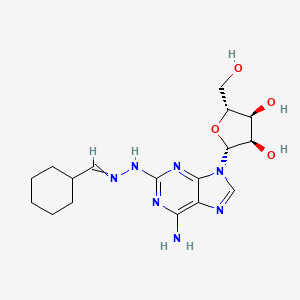|
Name: MDPV (3,4-Methylenedioxypyrovalerone)
Type: Stimulant
AKA: MDPV (Positional Isomers: 1-(1, 3-benzodioxol-5-yl)-2-(cyclohexylamino)propan-1-one(n-cyclohexyl methylone or 3, 4-methylenedioxy-alpha-cyclohexylaminopropiophenone) ; 1-(1, 3-benzodioxol-4-yl)-2-(pyrrolidin-1-yl)pentan-1-one (2, 3methylenedioxy pyrovalerone), synthetic cathinones

|
|
II. Natural Derivative
Synthetic substance, no natural derivative
 |

|
|
IV. History
MDPV, a synthetic stimulant, was first synthesized in the 1960s but gained prominence as a designer drug in the 2000s. Known for its stimulant and euphoric effects, MDPV's recreational use has raised significant health concerns and led to regulatory control due to its abuse potential.

|
|
V. Legal Information
MDPV is a synthetic stimulant with high abuse potential. It is controlled under stimulant regulations due to its addictive properties, with global trends towards increasing regulation to manage misuse. [Source: UNODC].
US Federal Schedule - I
Schedule I drugs, substances, or chemicals are defined as drugs with no currently accepted medical use and a high potential for abuse. Some examples of Schedule I drugs are: heroin, lysergic acid diethylamide (LSD), marijuana (cannabis), 3,4-methylenedioxymethamphetamine (ecstasy), methaqualone, and peyote.
Key US Federal Policies:
Controlled Substances Act. Public Law: Public Law 91-513 (text can be found on GovInfo) (https://www.dea.gov/drug-information/csa). Date enacted: October 27, 1970.
|
|
VI. Physical Effects
MDPV is a synthetic stimulant known for its powerful effects. It acts as an upper, increasing alertness and energy. Short-term use can lead to euphoria and heightened alertness, but long-term use poses risks of cardiovascular issues and severe psychological effects. Overdose risks include severe agitation, cardiovascular issues, and potential death. Safe use requires cautious dosing. Recent research highlights its potent stimulant effects and health risks.  |
|
VII. Psychological Effects
MDPV is a stimulant with effects similar to other cathinones, causing euphoria and increased energy. Long-term use can result in severe psychological effects, including paranoia, aggression, and cognitive impairments. Research focuses on its impact on neurotransmitter systems and associated mental health risks.
 |
|
VIII. Culture
MDPV is a potent stimulant and psychoactive drug, classifying it as an upper. Short-term use increases alertness and energy, while long-term use can lead to severe psychological dependence and cardiovascular issues. Overdose risks include severe agitation, hallucinations, and cardiovascular complications. Safe dosages are not well-established, with lower doses advised. Recent research highlights its high abuse potential and significant health risks. Physical effects include dilated pupils, increased heart rate, and elevated blood pressure.
 |
